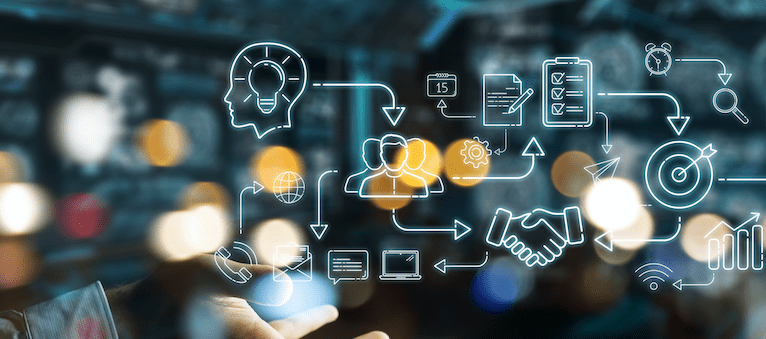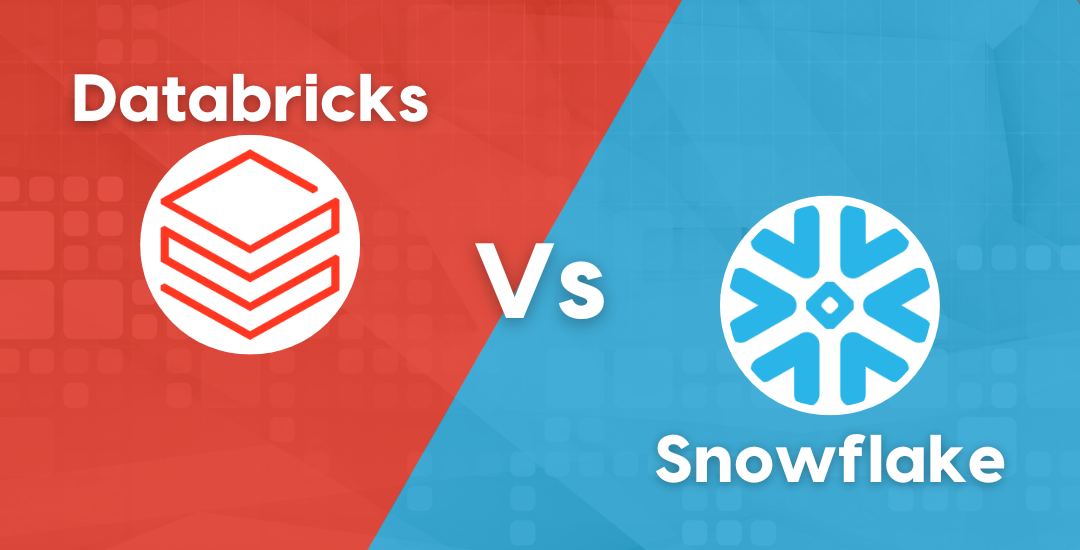Modern Data Stack
What is a Data Stack
A data stack refers to the set of technologies and tools that organizations use to collect, store, process, analyze, and govern their data. The data stack can be thought of as the “infrastructure” that enables organizations to turn raw data into actionable insights.
A data stack typically includes technologies and tools for data management, data warehousing, data governance, data analytics, data engineering, data science, data security and business intelligence. These components can include various software, platforms and technologies, such as:
- Data management: databases, data lakes, data pipelines, data integration tools, etc.
- Data warehousing: data warehousing platforms, ETL (extract, transform, load) tools, columnar databases, data marts, etc.
- Data governance: data quality tools, data catalogs, data lineage tools, etc.
- Data analytics: data visualization tools, data mining software, predictive analytics software, machine learning platforms, etc.
- Data engineering: data integration tools, data pipelines, data processing frameworks, data warehousing platforms, etc.
- Data science: machine learning libraries, natural language processing libraries, data visualization libraries, etc.
- Data security: data encryption tools, data masking tools, data access controls, data monitoring and auditing tools, etc.
- Business intelligence: business intelligence platforms, data visualization tools, data mining software, etc.
For these components, there can be specific stacks as well, for e.g.:
| Stack Type | Description | Typical Components |
| Big Data Stack | Technologies and tools used to manage, store and analyze large volumes of data | Hadoop, Spark, NoSQL databases, data visualization and analytics tools |
| Cloud Data Stack | Technologies and tools used to manage, store and analyze data in the cloud | Cloud-based data storage and processing services, data visualization and analytics tools that can be run in the cloud |
| Data Governance Stack | Technologies and tools used to ensure the accuracy, security, and compliance of data | Data quality tools, data catalogs, data lineage tools, data access controls, data monitoring and auditing tools |
| Data Analytics Stack | Technologies and tools used to extract insights from data | Data visualization tools, data mining software, predictive analytics software, machine learning platforms |
| Data Warehousing Stack | Technologies and tools used to manage and analyze large volumes of data | Data warehousing platforms, ETL tools, columnar databases, data marts |
| Data Engineering Stack | Technologies and tools used to collect, store, and process data at scale | Data integration tools, data pipelines, data processing frameworks, data warehousing platforms |
| Data Science Stack | Technologies and tools used in data science | Machine learning libraries, natural language processing libraries, data visualization libraries |
| Data Security Stack | Technologies and tools used to protect data from cyber threats and ensure compliance with industry regulations | Data encryption tools, data masking tools, data access controls, data monitoring and auditing tools |
| Business Intelligence Stack | Technologies and tools used to turn data into insights and drive better business decisions | Business intelligence platforms, data visualization tools, data mining software |
Legacy vs Modern Data Stack
Legacy data stacks refer to the older systems or technologies that were used to manage data in the past. These systems may be based on older technology or architecture and may not be able to handle the volume, variety, and velocity of data that modern organizations generate and process. They may also lack the scalability, flexibility, and security that are required to meet the needs of modern businesses.
Modern data stacks, on the other hand, are built using newer technology and architecture that are designed to handle the scale and complexity of modern data. They often make use of cloud-based services, distributed systems, and open-source technologies to provide scalability, flexibility, and cost-effectiveness. Modern data stacks are also designed to be more secure and to support real-time data processing and analytics.
Modern data stack also makes use of open source technologies, that often allows to build and customize your stack as per your need, include data integration, data processing, data storage, data governance, data discovery, data visualization, and machine learning platforms. They also empower data-driven decision making and the ability to extract insights.
Here is a comparison table between legacy and modern data stacks:
| Feature | Legacy Data Stack | Modern Data Stack |
| Architecture | Monolithic | Distributed, cloud-native |
| Scalability | Limited | High |
| Data processing | Batch-based | Real-time, stream-based |
| Data storage | Relational databases | Multi-model databases, data lake |
| Data governance | Ad-hoc, manual | Automated, policy-driven |
| Data integration | Custom-built, manual | Automated, API-based |
| Data discovery & visualization | Basic, static | Interactive, dynamic |
| Security | Basic, reactive | Advanced, proactive |
| Flexibility | Limited | High |
| Data science & machine learning | Basic | Advanced |
It’s important to notice that the distinction between legacy and modern data stacks is not always clear-cut, and the boundary between them can vary depending on the organization. Some organizations may have modernized parts of their data stack while maintaining legacy systems in other parts, while others may be in the process of transitioning from a legacy data stack to a modern one.
Components of a modern data stack
The six main components of a data stack are:
- Data Integration
- Data Storage
- Data Processing
- Data Analysis
- Data Visualization
- Data Governance and Management
| Data Stack Layer | Description | Examples |
| Data Integration | Technologies and tools used to collect and ingest data from various sources | Daton, AWS Kinesis, Logstash |
| Data Storage | Databases and other storage systems used to store data in a structured or unstructured format. Data modeling is closely tied to this layer, as the data model defines the structure of the data that is stored in these systems. | MySQL, PostgreSQL, MongoDB, Cassandra, AWS S3, Google Cloud Storage |
| Data Processing | Technologies and tools used to process and clean data | Apache Spark, Hadoop |
| Data Analysis | Tools and technologies used to analyze and extract insights from data | Machine learning platforms like TensorFlow and PyTorch or Python. SQL |
| Data Visualization | Tools and technologies used to display data in an easy-to-understand format | Power BI, Excel, Google Data Studio |
| Data Governance | Technologies and tools that help organizations manage and govern their data | Collibra, Informatica, Alation |
Data Collection Layer
This includes technologies and tools used to gather data from various sources, such as ELT tools, APIs, IoT devices, web scraping and databases.
| Data Collection Method | Salient Points | ELT/ETL Tools |
| Web scraping | Automated extraction of data from websites | BeautifulSoup, Scrapy, Parsehub |
| APIs | Programmatic access to data from external systems | Daton, RapidAPI, Talend |
| Database exports | Extracting data from a database and exporting it in a specific format | MySQL, SQL Server Management Studio, Oracle SQL Developer |
| Excel/CSV files | Extracting data from spreadsheet files | Microsoft Excel, OpenOffice Calc, Google Sheets |
| Log files | Extracting data from log files generated by various systems | Logstash, Flume, Fluentd |
| Social media data | Extracting data from social media platforms (e.g. tweets, posts, etc.) | Hootsuite Insights, Brandwatch, Crimson Hexagon |
Data Storage Layer
This includes technologies and tools used to store data, such as relational databases (e.g. MySQL, PostgreSQL), non-relational databases (e.g. MongoDB, Cassandra), data warehouse (e.g. Amazon Redshift, Google BigQuery) and cloud storage solutions (e.g. Amazon S3, Google Cloud Storage).
| Storage Option | Benefits | Trade-offs |
| Relational databases (e.g. MySQL, PostgreSQL) | Support structured queries using SQL, designed to ensure data integrity and consistency. | May be less performant at scale, and may require more complex setup and maintenance. |
| Non-relational databases (e.g. MongoDB, Cassandra) | More performant at scale and can be more efficient for certain use cases, such as storing large amounts of unstructured data. | Lack the robust querying capabilities of relational databases and may not be as good at ensuring data integrity and consistency. |
| Data warehouse (e.g. Amazon Redshift, Google BigQuery) | Designed for data warehousing and business intelligence (BI) workloads, allows for storing and querying large amounts of historical data, and support complex aggregate queries. | More expensive in terms of licensing and maintenance costs, and may be less performant with high write loads. |
| Cloud storage (e.g. Amazon S3, Google Cloud Storage) | Can be highly scalable and allows for easy access to data from anywhere. | Can be more expensive than other storage options, and may require more complex security and compliance considerations. |
| Distributed File Systems (e.g HDFS, GlusterFS) | High availability and data replication, support very large files and directories, well suited for big data and batch processing workloads | Require more complex setup and maintenance, and may not support real-time data access or transactional workloads |
Data Processing Layer
This includes technologies and tools used to process and transform data, such as Apache Hadoop and Apache Spark.
| Data Processing Technology | Salient Points |
| Hadoop | Distributed data processing framework for big data |
| Spark | In-memory data processing framework for big data |
| Storm | Real-time data processing framework for streaming data |
| Flink | Distributed data processing framework for streaming and batch data |
| Kafka | Distributed data streaming platform |
| NiFi | Platform for dataflow management and data integration |
| SQL | declarative programming language to interact and manage relational databases |
| Dataflow | Fully-managed service for creating data processing pipelines |
| Airflow | Open-source platform to create, schedule, and monitor data pipelines |
| AWS Glue | Serverless extract, transform, and load (ETL) service |
| Azure Data Factory | Cloud-based data integration service |
| Google Cloud Dataflow | Cloud-based data processing service |
Data Analysis Layer
This includes technologies and tools used to analyze and gain insights from data, such as SQL, Python libraries for data analysis (e.g. Pandas, NumPy), and business intelligence (BI) tools (e.g. Tableau, Looker).
| Data Analysis Technology | Salient Points |
| R | Open-source programming language for data analysis and visualization |
| Python | General-purpose programming language for data analysis and machine learning |
| SAS | Suite of software for data analysis, business intelligence, and predictive analytics |
| MATLAB | Programming language and environment for numerical computation and visualization |
| Tableau | Data visualization tool that allows users to create interactive dashboards and charts |
| Excel | Spreadsheet software that can be used for basic data analysis and visualization |
| SQL | Declarative programming language used to extract, analyze and query data from relational databases |
| Power BI | Data visualization and business intelligence tool from Microsoft |
| Looker | Data visualization and exploration platform |
| Google Analytics | Web analytics service that tracks and reports website traffic |
| BigQuery | Cloud-based big data analytics web service from Google |
Data Visualization Layer
This includes technologies and tools used to create visualizations and dashboards, such as Tableau, D3.js, matplotlib, ggplot2 and others.
| Technology | Description |
| Matplotlib | A plotting library for the Python programming language. Often used for basic plots and charts. |
| Seaborn | A data visualization library based on Matplotlib. Provides more advanced visualization options and a more attractive default style. |
| Plotly | A library for creating interactive, web-based plots and charts. Can be used with Python, R, or JavaScript. |
| Bokeh | A library for creating interactive, web-based plots and charts similar to Plotly. Focused on providing a smooth user experience. |
| ggplot2 | A plotting library for the R programming language, based on the grammar of graphics. Provides a high-level interface for creating plots and charts. |
| D3.js | A JavaScript library for creating interactive, web-based data visualizations. Often used for more complex visualizations, such as network diagrams and maps. |
| Tableau | A commercial data visualization tool that allows users to create interactive, web-based visualizations without coding. |
| Power BI | A commercial data visualization and business intelligence tool developed by Microsoft. Allows for easy creation of interactive dashboards and reports. |
| Looker | A Business Intelligence and Data visualization tool which offers an easy way to create and share interactive and insightful data visualizations. |
| Apache Superset | An open-source business intelligence web application to create and share data visualizations, it has a simple and intuitive UI, SQL Lab, and support for a wide range of databases. |
Data Governance & Management Layer
This includes technologies and tools used to manage and govern data, such as data cataloging, data lineage, data quality and metadata management.
| Component | Description | Considerations |
| Data Governance Framework | A set of guidelines and processes that govern how data is collected, stored, and used within an organization. | – Align with overall business strategy and goals.– Clearly define roles and responsibilities for data governance.– Regularly review and update the framework to stay current with industry best practices and regulations. |
| Data Governance Team | A dedicated group of individuals responsible for implementing and maintaining the data governance framework. | – Comprise of representatives from different departments and levels within the organization.– Ensure team members have the necessary skills and expertise.– Provide regular training and development opportunities for team members. |
| Data Management Policy | A set of rules and procedures for how data is collected, stored, and used within the organization. | – Clearly outline the type of data that is collected and how it is used.– Address data security and privacy concerns.– Regularly review and update the policy to stay current with industry best practices and regulations. |
| Data Quality | The degree to which data meets the requirements set out in the data governance framework and data management policy. | – Establish processes for monitoring and improving data quality.– Implement data validation and cleaning procedures to ensure accuracy and completeness.– Regularly review and update the data quality procedures. |
| Data Security | Measures put in place to protect data from unauthorized access, use, or disclosure. | – Implement appropriate security controls, such as encryption and access controls, to protect data at rest and in transit.– Regularly monitor and review the security of data to detect and respond to potential security breaches.– Train employees on data security best practices. |
| Data Privacy | Procedures for protecting personal data and ensuring compliance with relevant regulations, such as GDPR. | – Regularly review and update data privacy procedures to stay current with industry best practices and regulations.– Train employees on data privacy best practices.– Implement appropriate technical and organizational measures to protect personal data, such as pseudonymization and access controls. |
Conclusion
In conclusion, a modern data stack is essential for businesses to collect, store, process, model, visualize, and analyze their data in order to gain valuable insights and drive growth. It typically involves several key components such as data collection, storage, processing, modeling, visualization, and business intelligence.
Add Comment
You must be logged in to post a comment.








